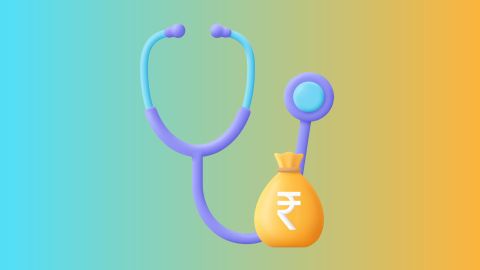In today’s fast-paced healthcare environment, managing patient information efficiently is crucial. This is where a patient management system comes into play. It streamlines the way medical practices handle patient data, making operations smoother and more organised. From scheduling appointments to managing medical records, a patient management system plays a vital role in ensuring that healthcare providers deliver top-notch care. With technology advancing rapidly, integrating a patient record management system into your practice can revolutionise how you interact with patients and handle data. In this article, we will delve into what a patient management system is, its key features, and the benefits it offers. Whether you are setting up a new clinic or looking to upgrade your existing system, understanding these elements will help you make an informed decision.
What is a patient management system?
A patient management system is a software solution designed to handle various administrative tasks within a healthcare practice. It helps in the effective management of patient data and streamlines the workflow. Here is a breakdown of what this system entails:
- Patient scheduling: Facilitates easy booking and rescheduling of appointments.
- Medical record keeping: Maintains comprehensive and up-to-date medical records.
- Billing and invoicing: Automates billing processes and generates invoices.
- Communication tools: Includes features for communicating with patients via email or SMS.
A well-integrated system enhances the overall efficiency of a healthcare facility by consolidating multiple functions into one platform.
What does a patient management system do?
The core function of a patient management system is to simplify and improve the management of patient-related activities. Here is how it works:
- Data integration: Combines various forms of patient data into a unified database.
- Appointment management: Allows staff to schedule, modify, and track appointments seamlessly.
- Record accessibility: Provides quick access to patient records for authorised users.
- Automated reminders: Sends automated reminders for upcoming appointments or follow-ups.
By centralising patient data and automating routine tasks, the system significantly reduces manual errors and administrative workload.
Why do you need a patient management system?
Incorporating a patient management system into your practice offers several advantages:
- Efficiency: Streamlines administrative tasks, saving time and reducing paperwork.
- Accuracy: Minimises errors in patient records and billing.
- Patient satisfaction: Enhances the overall patient experience through streamlined communication and scheduling.
- Data security: Ensures that sensitive patient information is stored securely and accessed only by authorised personnel.
Implementing this system can greatly improve the overall functioning of your healthcare practice.
Challenges faced due to the lack of a patient management system
The absence of a patient management system in healthcare facilities can lead to several operational and service-related challenges, negatively affecting both patients and providers.
- Inefficient record-keeping: Without a centralised system, patient records are often stored manually, making it difficult to retrieve data promptly. This can delay treatment and compromise the quality of care.
- Fragmented communication: Lack of an integrated system hampers communication between departments, leading to errors in medication, misdiagnosis, or duplication of diagnostic tests.
- Increased administrative burden: Managing appointments, billing, and patient records manually consumes significant time and effort, reducing efficiency and increasing the workload on staff.
- Poor patient experience: Patients may face long wait times, mismanaged schedules, and inadequate follow-ups, resulting in dissatisfaction and diminished trust in the healthcare system.
- Billing complexities: Handling diverse payment methods and coordinating with various insurance providers can become cumbersome without automation, leading to billing errors or delayed reimbursements.
- Limited scalability: As healthcare facilities grow, manual processes struggle to adapt to increased patient loads, causing bottlenecks in service delivery.
In a fast-evolving healthcare landscape, the lack of a patient management system restricts a facility’s ability to deliver streamlined, efficient, and patient-centric care. Adopting digital solutions is essential to overcome these challenges.
Key features of an ideal patient management system
An ideal patient management system should encompass the following features:
- User-friendly interface: Easy to navigate and use by both staff and patients.
- Customisable: Adaptable to the specific needs of your practice.
- Integration capabilities: Seamlessly integrates with other healthcare systems.
- Analytics and reporting: Provides insightful data and reports to aid in decision-making.
- Mobile access: Allows access to the system via mobile devices for convenience.
These features contribute to a more efficient and effective practice.
8 key benefits of a patient management system
Adopting a patient management system comes with numerous benefits:
- Enhanced efficiency: Automates administrative tasks, reducing time spent on manual processes.
- Improved accuracy: Minimises human errors in patient records and billing.
- Better patient care: Provides a comprehensive view of patient history, leading to more informed treatment decisions.
- Increased productivity: Frees uptime for healthcare providers to focus on patient care rather than paperwork.
- Streamlined communication: Facilitates better communication between patients and healthcare providers.
- Data security: Protects sensitive patient information with advanced security features.
- Compliance: Helps in adhering to healthcare regulations and standards.
- Cost savings: Reduces operational costs by automating various tasks and improving efficiency.
Conclusion
Incorporating a patient management system into your healthcare practice can significantly enhance efficiency and patient satisfaction. It simplifies various administrative tasks and ensures accurate record-keeping. If you are considering upgrading your system, you might also want to explore financial options to support your investment. For this, the Bajaj Finserv Doctor Loan offers flexible financing solutions tailored for medical professionals.




